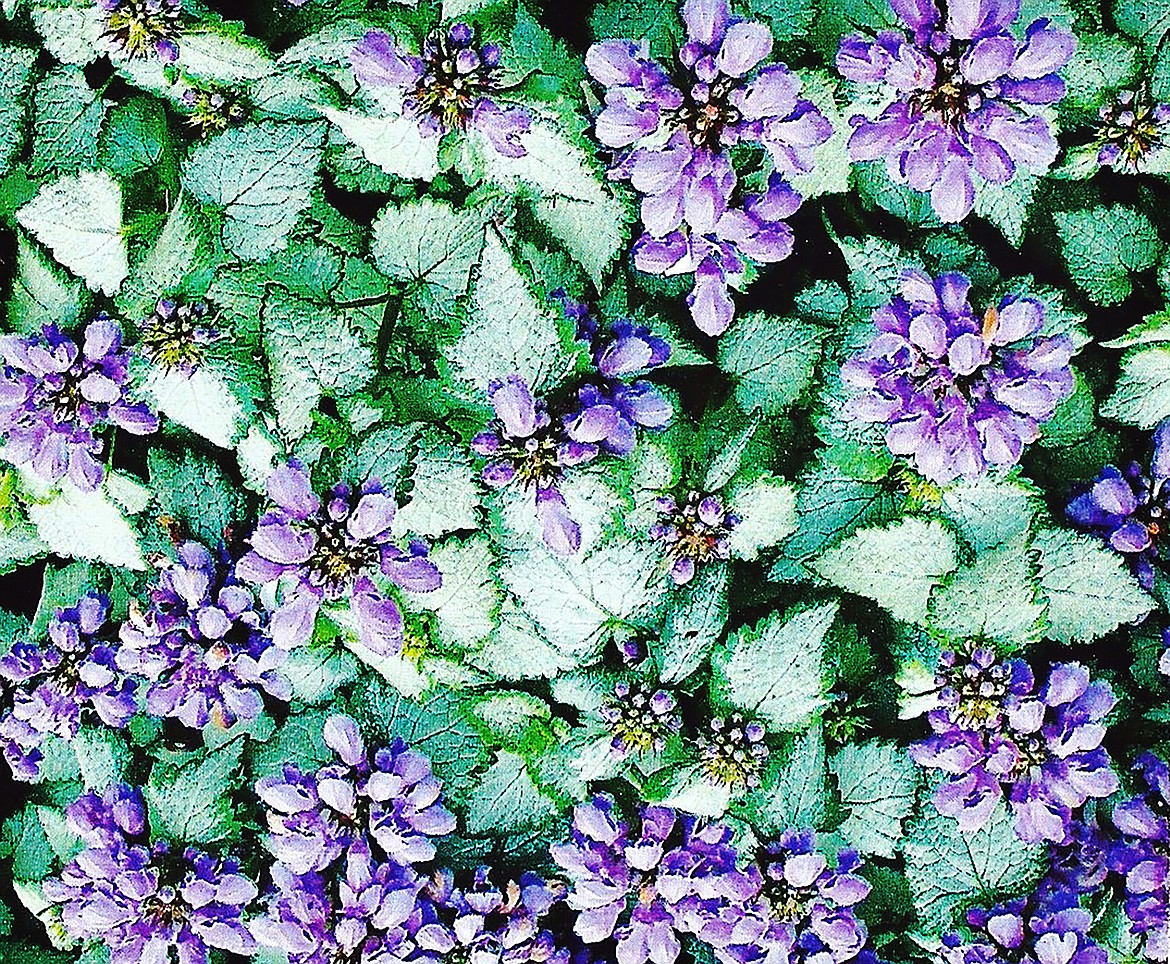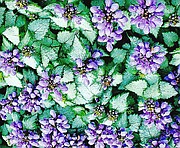Ground-covers offer options for yard, landscaping
VALLE NOVAK Contributing Writer | Bonner County Daily Bee | UPDATED 4 years, 5 months AGO
If you're one of those people tired of mowing in the heat and torn between keeping your lawn and/or letting it go wild, there is an easier way.
Think about planting clumps of creeping ground-covers: Thyme, Phlox, Veronica, Saponaria (soapwort), Achillea, all of which come in many varieties, textures and colors and can be mowed over with a high blade setting. I call them “duckweeds” since they have learned to duck the mower blade and have actually starting growing their blossoms lower (I swear!).
For larger spots where more cover is needed, consider our pictured Sweet woodruff (Galium Odoratum) with its delicate, ferny whorled leaves and tiny white flower “bouquets” (so nice to pluck and tuck into a bottle of white wine for instant Maywine), or perhaps Snow in Summer (Cerastium) with its pretty fragrant white trumpet-shaped flowers and grey-green foliage.
Vinca Minor (Periwinkle), is slow to get started, but will make a glossy, beautiful expanse of evergreen leaves dotted (in late spring) with lovely lavender-blue flowers. In time (I must warn you) it will completely cover your landscape, and finally, the whole world! I have it and do love it, and have found that I can pull it out in great long tangles of vine quite easily, and it takes a good several years for it to get that invasive
If you have bare spots you’d like to address, plant some pretty spreading ornamentals like Blue Clips Campanula-dainty-looking but tough, sweet-smelling Dianthus, or Lamium (dead nettle) with its attractive variegated leaves, pictured. Other possibilities are ornamental grasses like Idaho blue fescue, purple-plumed Miscanthus, Helictotrichon (Blue Avena grass) and/or possibly some of the Heaths and Heathers hardy here. Lavender (Lavendula angustifolia) is possible if you select either Hidcote or Munstead.
Too, think along the lines of rock garden selections. Alchemilla molis (Lady’s Mantle), Shrubby Penstemon, Sedums for dry, bare spots, Iberis (Candytuft), and consider Alpine strawberries which grow beautifully in lawn-type surroundings – you can have your own perennial strawberry bed providing sweet surprises throughout the summer and into the fall.
Single large eye-catchers are great if placed strategically. A Peony, a clump of Iris or daylilies (Hemerocallis), Nepeta (catmint) or Salvia (Six-Hills Giant) can do the job of a whole bed of beauties, especially if set off with a large rock or perhaps a birdbath or nice piece of statuary.
There are two caveats for whatever you choose to do. The first is to make sure that purchased non-native plants are hardy in our 3-4-5 zone, and the second is that you must heretofore NEVER use weed and feed or other fertilizers or ‘cides in your landscape. Remember, weed-and-feed thinks anything other than grass is a “weed.”
An existing lawn or one in the planning stages is the ideal palette for a glorious panorama of green sprinkled with seasonal swathes or patches - as you choose - of beautiful flowers from bulbs, corms and tubers and spreading biennials and perennials. All of these, of course, are to be planted in the fall, so use this summer to choose your plants and rough design of scattering.
There are bulbs galore: Spring bloomers like Crocus, Snowdrops and Muscaria followed by daffodils, narcissus, tulips, lily of the valley, Forget-me-Not (or the hardier Mertensis), scilla, hyacinth, English and/or Spanish bluebells. Gorgeous summer lilies (Orientals and Asiatics) and huge red-orange poppies provide drama with beauty, to perhaps be followed with Alliums (ornamental onion) in all sizes and bloom shapes, Crown Imperial, Anemones (windflowers), Iris reticulata and the tall, fragile-looking but hardy Dutch iris.
Bulbs lend themselves to naturalization beautifully. This means simply tossing a handful of bulbs in a loose pattern of your choosing and planting them where they land. Dig a hole with a bulb planter or narrow trowel to the depth indicated for individual bulbs, put in a fourth-cup of bulb food if you wish or some rich compost, plant and cover loosely. When finished, water the area generously.
For transition areas from lawn to property line, consider a free-form swath of Hosta, Pulmonaria and Brunnera in an assortment of leaf and flower design. These beauties prefer at least dappled shade so are perfect for integration into a treed site. Intersperse if you wish with Coral bells (Heuchera), also available in myriad leaf/flower colors from lime green to purple to variegated. All of these choices spread themselves freely, often in new colors and leaf patterns. Their hardiness is a true boon to overcoming our unplottable winters, springs and summers.
A warning however, should be given here for those who have a visiting deer population: They have a taste for Hostas and will eat them with relish, often pulling the plants right out of the ground. Too, depending on the color of the Coral Bells leaves, they will eat the green-hued plants but not the reds, golds, and striped patterns also available. I learned this the hard way and since having discovered the beauty and dependability of Brunnera and the vigor of the native Pulmonaria (Lungwort) really don’t regret discarding the others.
I do confess to one giant Hosta plant in a large container that has thrived in a tiny courtyard due to the huge realistic Rattlesnake curled and rearing from its greenery. Visiting deer won’t get near it. Whatever works!
Valle Novak writes the Country Chef and Weekend Gardener columns for the Daily Bee. She can be reached at [email protected]. or by phone at 208-265-4688 between the hours of 8 a.m. to 6:30 p.m.





